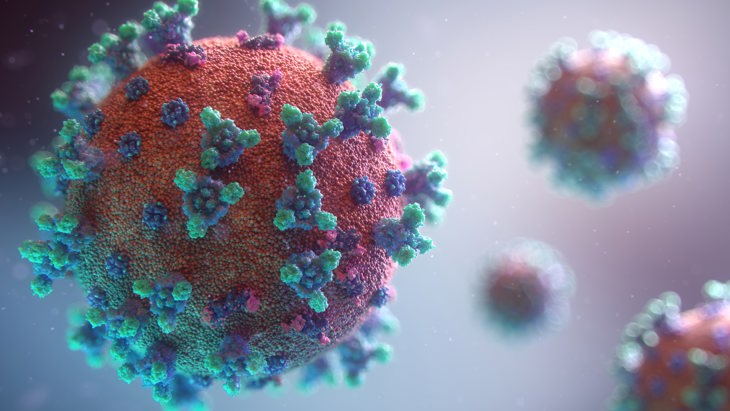 @Unsplash
@Unsplash
The vaccine roll-out is a shot in the arm for cyclical growth. However, do not mistake a pandemic recovery with a structural one..
We have revised up our US growth forecasts to 5.0% and 2.8% for 2021/22, while also expecting slightly higher inflation and yields due to higher fiscal stimulus and the broad vaccine roll-out.
Overall, we continue to see balanced risks to the global outlook and most of our projections remain below consensus.
Uneven recovery paths as vaccine roll-out gains momentum.
The vaccination race is on and the first countries to reach herd immunity will have a significant economic and social advantage. As of now, the US and UK are much better positioned to reach herd immunity than the Euro area countries.
China has already exceeded its pre-COVID-19 GDP level, while we expect the US and the Euro area to return to their pre-crisis output levels by Q4 2021 and Q3 2022, respectively.
Fresh stimulus will support economic recovery.
We see a somewhat lower risk of disruptive and premature policy tightening.
In the US, we now expect additional fiscal stimulus of around USD 1 trillion. While lower than President Biden's USD 1.9 trillion proposal, this will provide substantial support for the recovery.
Coupled with very accommodative US Federal Reserve policy and ongoing vaccine roll-out, we have revised up our US growth forecasts to 5.0% for 2021 and 2.8% for 2022 (from 3.5%/2.3%).
In the Euro area, the ECB will continue to ensure ample liquidity, though we expect a slight double-dip economic contraction in Q1 2020.
In China, monetary and fiscal support is turning more prudent and targeted given the strong growth momentum.
Inflation risk is on the rise.
We expect inflation to increase significantly globally in the first half of 2021 due to fading effects from last year’s oil price fall.
Inflation will likely temporarily approach 3% in the US by May and we have revised up our 2021 US inflation forecast to 2.4% (from 2.2%).
The large fiscal stimulus package creates upside risks. Medium-term inflation risks
have also increased since central banks worldwide are likely to tolerate higher
inflation for some time amid very low inflation expectations.
While a brighter economic outlook and higher inflation risks are tailwinds for higher long-term yields, the overall lower-for-longer outlook for the interest rate environment remains very much intact.

We see further pandemic setbacks as the dominant near-term global downside risk.
Setbacks could include another surge in COVID-19 infections, slower-than-anticipated vaccine rollout due to bottlenecks in production or distribution, or further COVID-19 mutations that reduce the effectiveness of existing vaccines.
These risks could delay economic recovery by causing lockdowns to be tightened or extended for longer, particularly in Europe.
Key to watch: COVID-19 infection rates, vaccination progress, virus mutations, stringency of restrictions.

Public support measures have prevented an increase in business insolvencies so far, but these are likely to go up once those measures are phased out.
The depth of the COVID-19 crisis means insolvencies could rise by as much as during the global financial crisis of 2008-09 in a risk scenario.
Alternatively, the trend of "zombification" could lead to a delayed, but ultimately sharp increase in insolvencies if support measures are prolonged.
Key to watch: Business bankruptcies, credit spreads, restructuring/default rate news.

COVID-19 has dramatically increased public debt levels.
As restrictions are eased and economies rebound, governments may withdraw economic support or tighten policy prematurely, which could choke the upswing.
There is currently broad global agreement about the need for fiscal and monetary support, but this consensus may not hold.
Key to watch: Further US fiscal stimulus, fiscal announcements, central bank speeches.

We expect inflation to increase during spring due to fading effects from declining oil prices in 2020.
In the medium term, inflation risks stem from the massive amounts of fiscal and monetary stimulus on the back of the COVID-19 shock, potential supply chain disruptions and central banks' tolerance for higher inflation to deal with the large global debt burden.
Key to watch: OPEC+ communication; Eurozone HICP: 23 February; US PCE: 26 February; US CPI: 10 February.

Growth could strengthen if vaccination roll-out is quicker than our baseline outlook, if additional fiscal stimulus is approved; or if we see a medium-term resolution of the US-China trade disputes, with tariff roll-back.
There is also upside risk from greater economic resilience to COVID-19-related restrictions.
For example, the manufacturing sector seems to be suffering significantly less in the current lockdown than during the first wave of infections in spring 2020
Key to watch: Vaccination progress, fiscal spending plans, severity of lockdowns, PMIs, real interest rates, US-China trade and tech disputes.